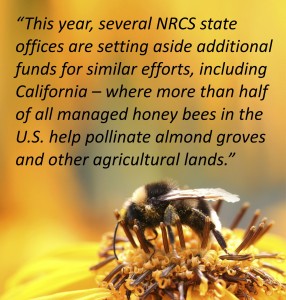By Mark Grossi, The Fresno Bee
Farm water officials worked years on the $7.5 billion state water bond that passed Tuesday, offering the possibility of partly bankrolling a new reservoir near Fresno. Now it’s time for round two – actually getting funding for Temperance Flat and other projects.
At the Fresno Irrigation District Thursday, farm water officials joined the California Latino Water Coalition in announcing they would continue pushing for the projects next year at the California Water Commission in Sacramento. The commission will allocate $2.7 billion for water storage projects, based on public benefit, and there will be competition for the money.
“Tuesday was not a finish line,” said Ryan Jacobsen, executive director of the Fresno County Farm Bureau. “It’s a starting line to make sure projects get the funding.”
The water bond, known as Proposition 1, passed statewide with 66.8% of voters in approval, according to the California Secretary of State. Supporters lamented that California had to go through the intense three-year drought before agreeing to the bond, which will be spent on many kinds of projects, such as water conservation, water treatment and storage.
A new dam at Temperance Flat, upstream of Millerton Lake, would nearly triple the storage capacity. Critics say there’s not enough water coming from the San Joaquin River to justify the dam, but farm water officials say the storage is needed to capture water in wet years.
The debates now will shift to the California Water Commission, which has nine members. Two are from the San Joaquin Valley – farmer Joe Del Bosque and Dave Orth, general manager of the Kings River Conservation District. Del Bosque took part Thursday in the announcement at Fresno Irrigation District headquarters.
“We should savor this (election) victory,” he said. “But we still have work to do. And we’re still not out of the water crisis.”
The three-year drought hit the Valley hard, particularly this year after one of the driest winters on record. Both east- and west-side farmers who get water from the federal Central Valley Project got a zero allocation.
Hundreds of thousands of acres were left barren this year. Thousands of farm jobs were lost, Jacobsen said.
Farm water officials say that if a larger reservoir had been built upstream of Millerton, it could captured water from a previous wet year and eased the drought for 15,000 east Valley farmers in the Friant Water Authority. In addition, the underground water table continues to drop dramatically, leaving hundreds of private well owners dry. More water in a reservoir would mean more water to recharge the underground, officials said.
Mario Santoyo of the Latino Water Coalition said the bond, called Proposition 1, would help provide water in many ways, such as recycling projects for cities and drinking water system fixes for small, disadvantaged communities.
Tulare County Supervisor Allen Ishida, who is an east-side farmer, said it is gratifying to see disadvantaged communities around California will get immediate help. His county has widespread nitrate contamination drinking water of small communities, such as Seville.
“Long-term storage will take a while to build,” he said. “But disadvantaged communities need the help now.”









